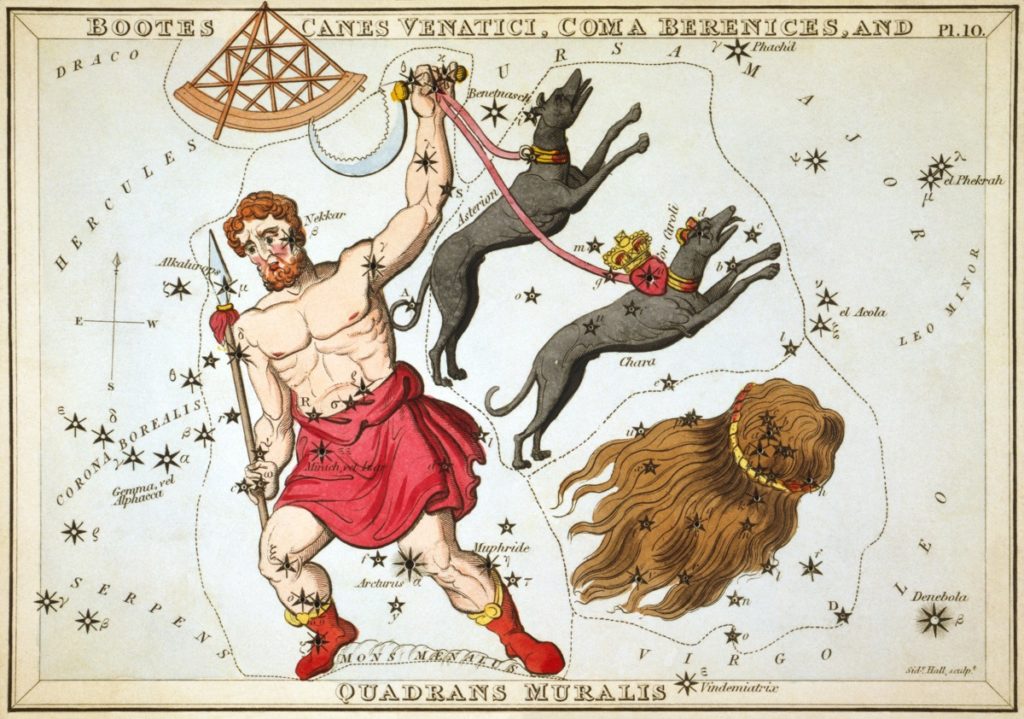
Just under the handle of the Big Dipper lies the dim constellation Canes Venatici, the Hunting Dogs, one of ten star groups devised by the 17th century astronomer Johannes Hevelius. Serving as the mayor of Danzig by day, Hevelius, understandably, preferred astronomy to politics and worked diligently to map the Moon, observe sunspots, and modernize maps of the northern night sky. In devising this constellation, he took into account past astronomical references to the two stars south of the Dipper’s handle as “hunting dogs” held on a leash by the huntsman represented by the constellation Bootes as they snapped at the hindquarters of the great bear of Ursa Major.
The brighter of the two stars in this dim constellation is 3rd-magnitude Alpha Canes Venaticorum, more informally called Cor Caroli, the ‘Heart of Charles’. The star was named after Charles I, the unfortunate monarch caught in the buzz saw of the English Civil War and beheaded in 1649. The fainter is 4th-magnitude Beta Canes Venaticorum, also known as Chara. As for the rest of the constellation, it isn’t much to look at. Like the adjacent Coma Berenices, few bright stars lie here because we’re looking in a direction out of the plane of the Milky Way and into intergalactic space. But there are plenty of galaxies here, and a couple of other deep-sky objects of note for backyard stargazers. Let’s take a short tour of a handful of highlights in this little constellation. [Read more…] about A Deep-Sky Tour of the ‘Hunting Dogs’
Share This: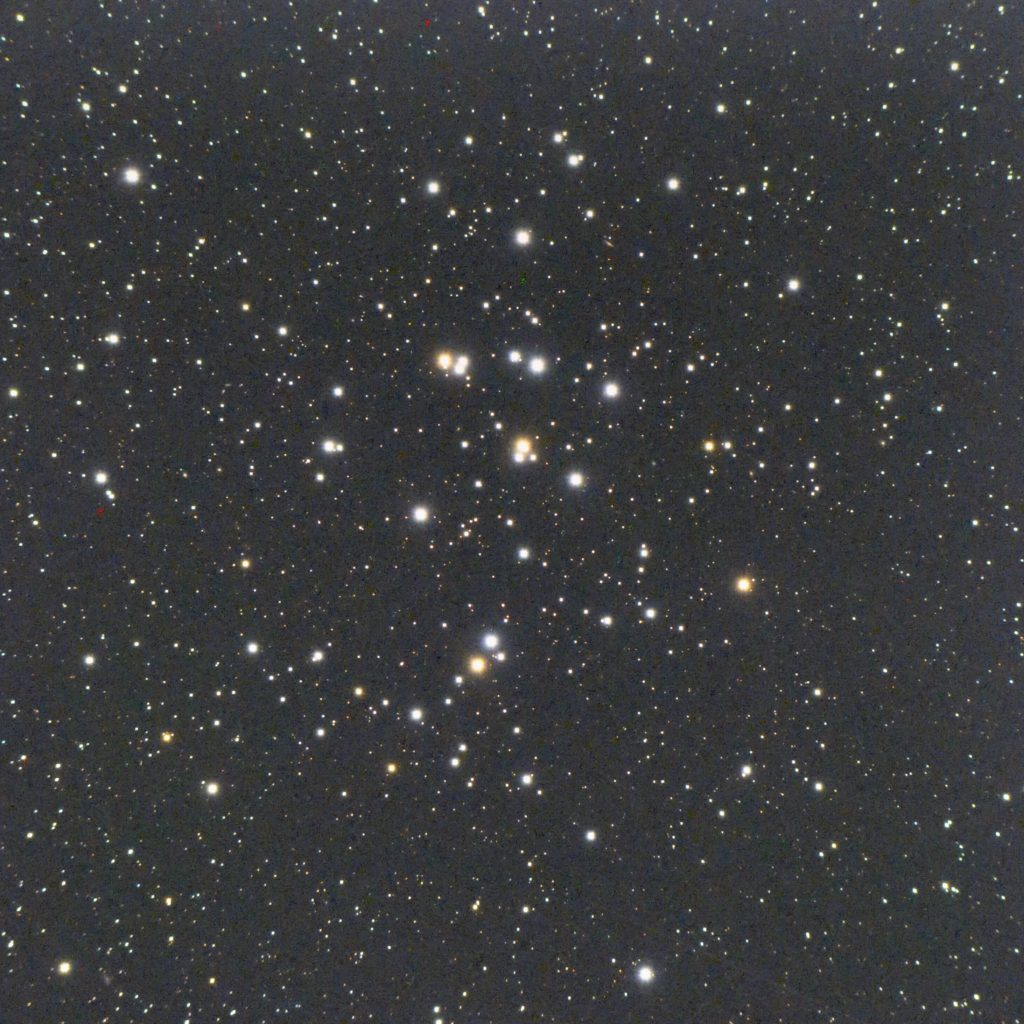
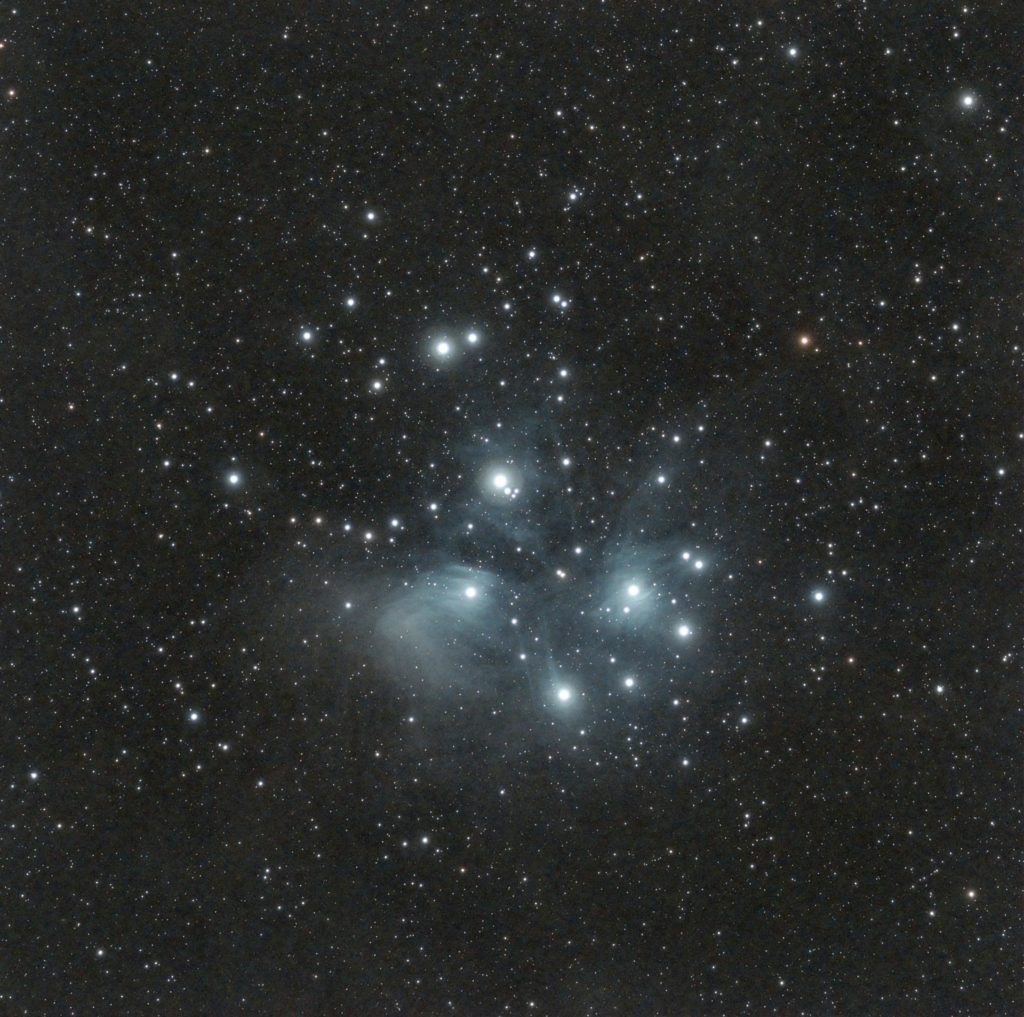
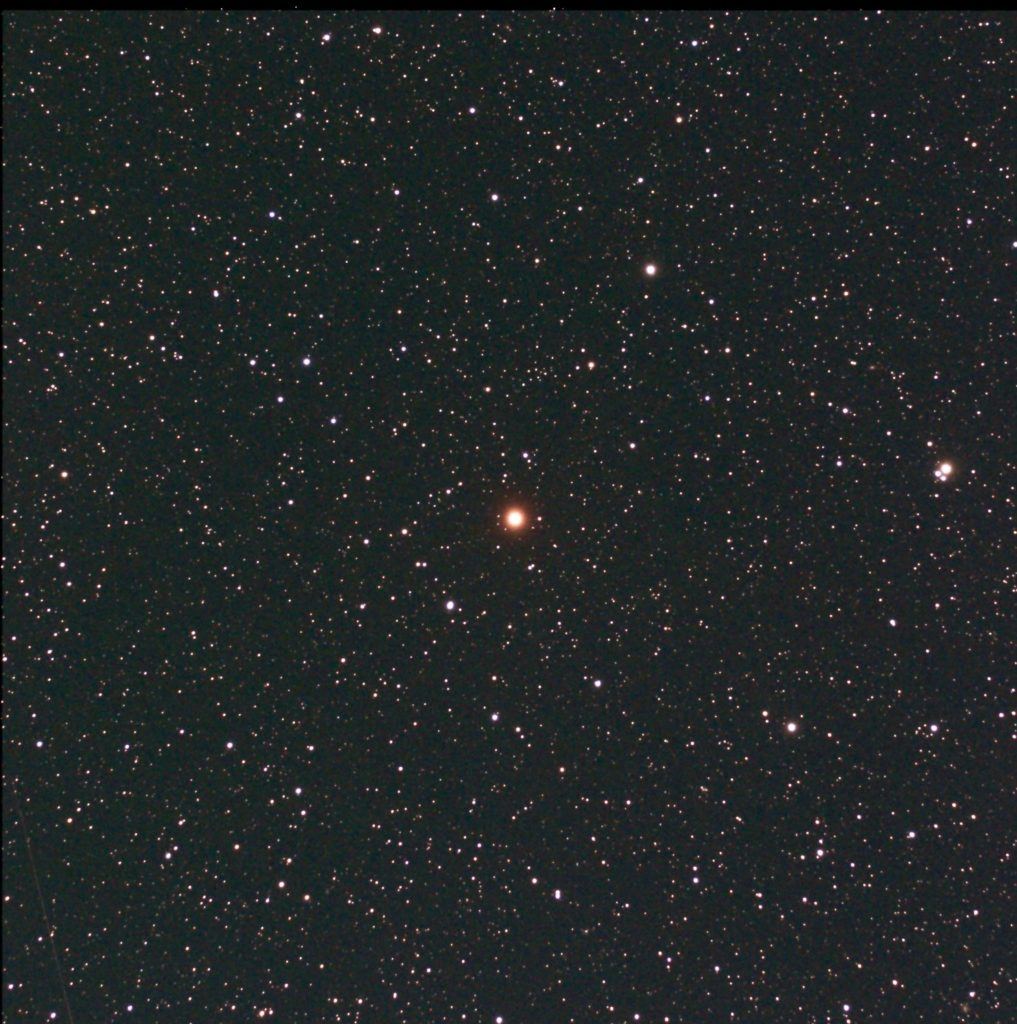
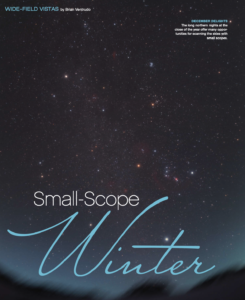 If you’re looking for something good to see in the northern-hemisphere winter sky, my recent article at Sky & Telescope magazine will give you plenty of ideas. From the star clusters of Perseus down to the rich fields of Canis Major and Puppis, this tour includes a couple of dozen deep-sky sights and collections of sights that look better in a small telescope than in a big one.
If you’re looking for something good to see in the northern-hemisphere winter sky, my recent article at Sky & Telescope magazine will give you plenty of ideas. From the star clusters of Perseus down to the rich fields of Canis Major and Puppis, this tour includes a couple of dozen deep-sky sights and collections of sights that look better in a small telescope than in a big one.